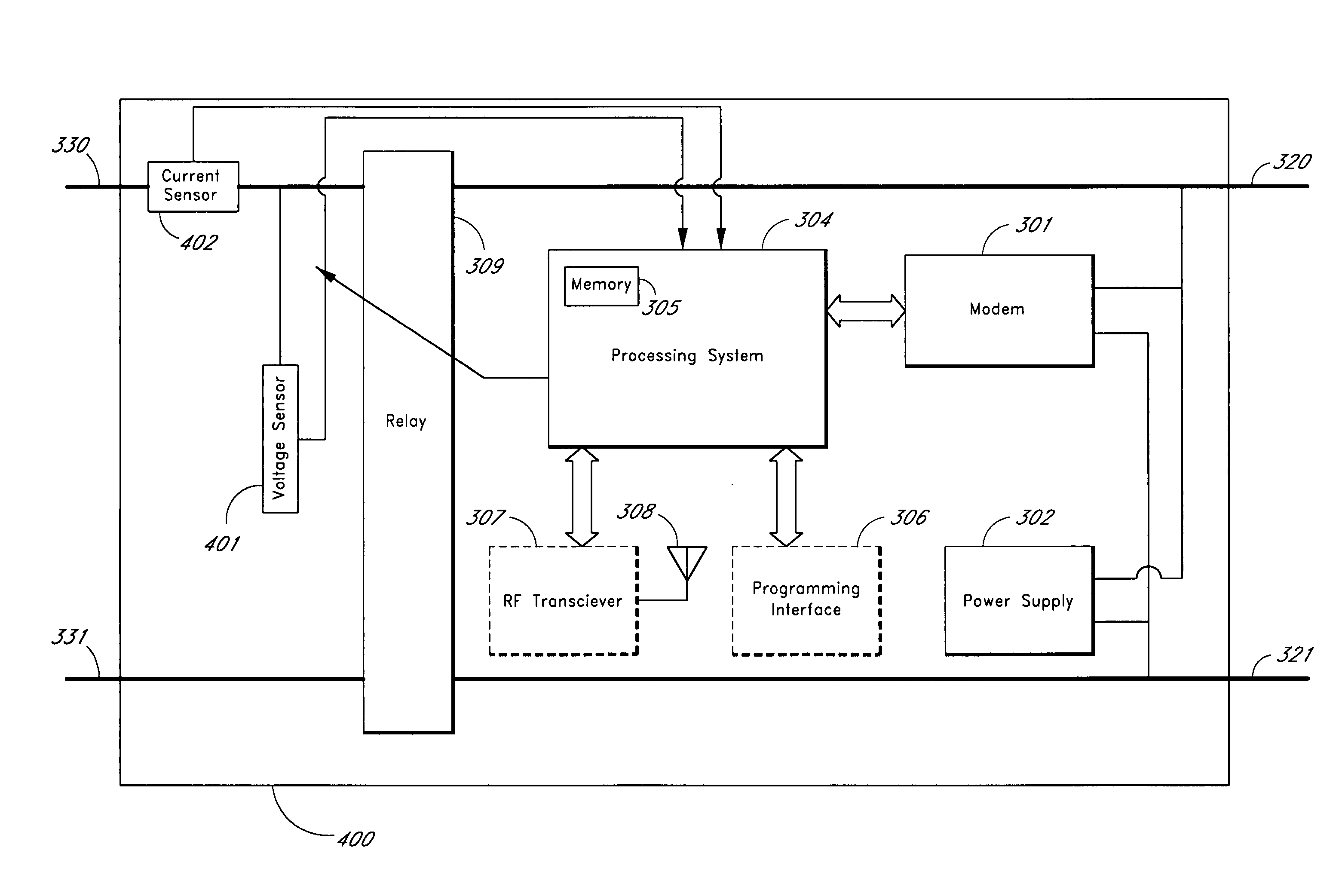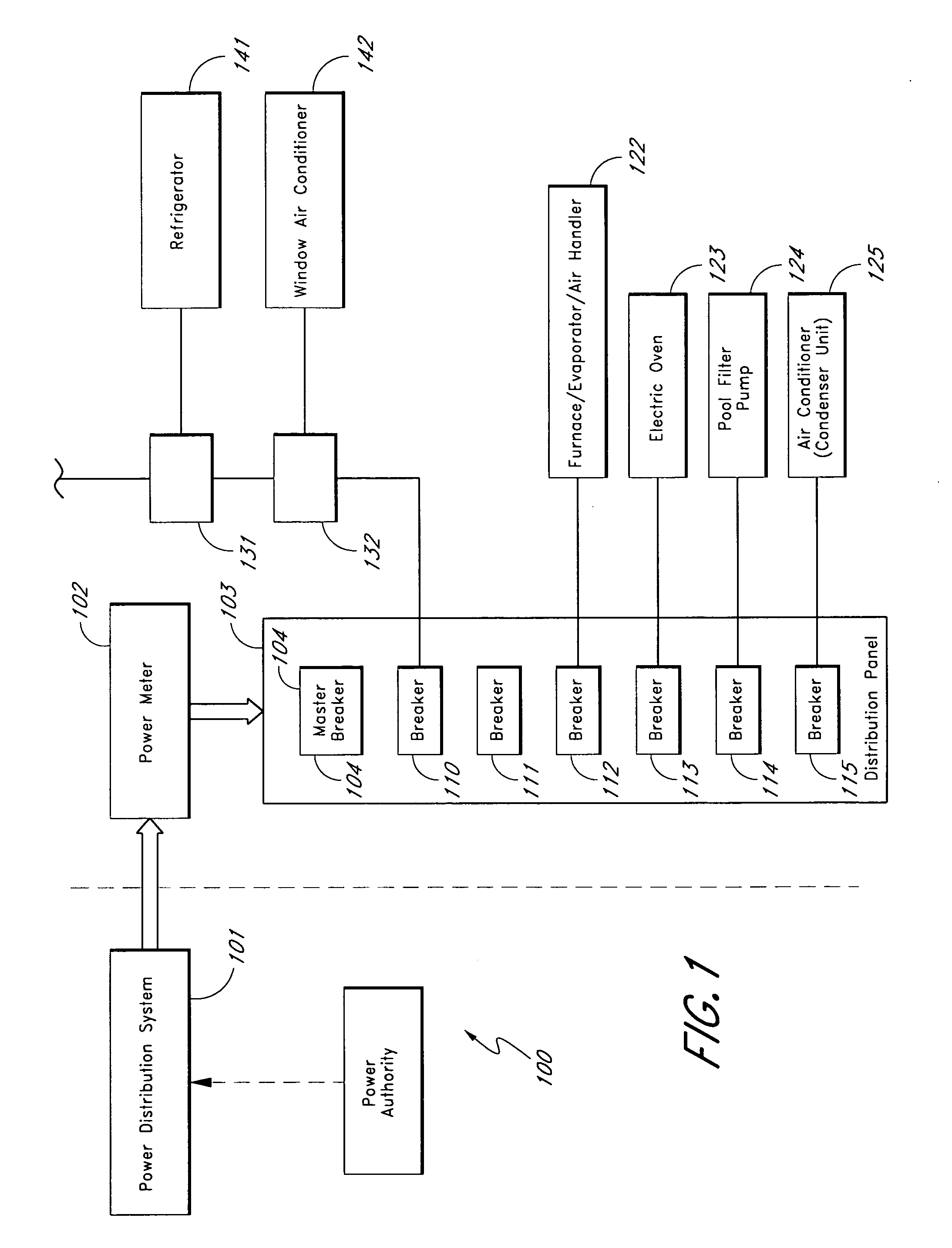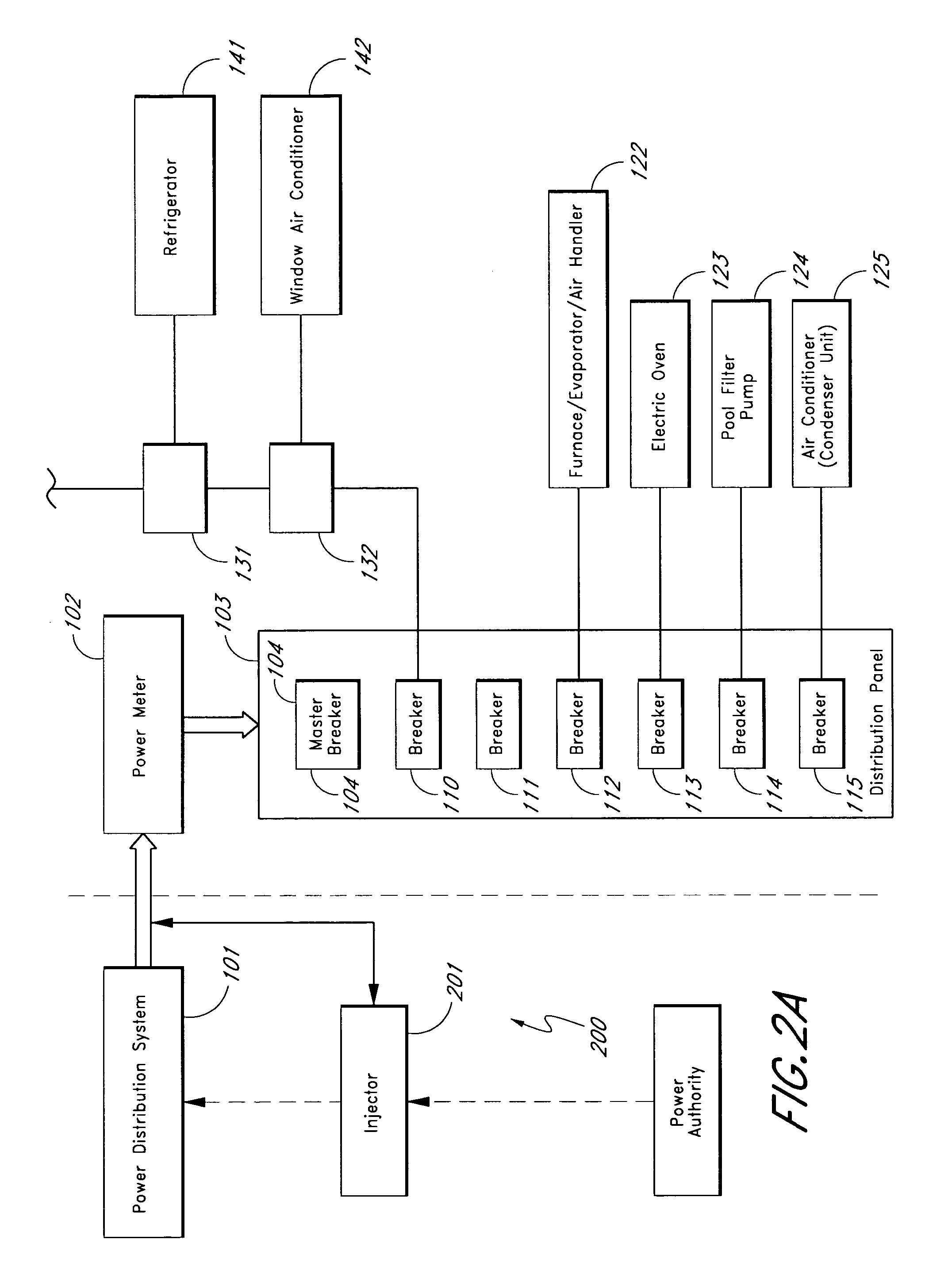Method and apparatus for load management in an electric power system
a technology of load management and electric power system, applied in the integration of power network operation system, relays, sustainable buildings, etc., can solve the problems of increasing the risk of damage to electrical and electronic equipment, community forced to endure rolling blackouts, and the demand for electrical energy often produces overload conditions on many electric power distribution systems. , to achieve the effect of reducing system load, avoiding power surges, and reducing power usag
- Summary
- Abstract
- Description
- Claims
- Application Information
AI Technical Summary
Benefits of technology
Problems solved by technology
Method used
Image
Examples
Embodiment Construction
[0033]FIG. 1 shows an electrical system 100 for a home or commercial structure. In the system 100, electrical power from a distribution system 101 is provided to a power meter 102. The power meter 102 measures electrical power provided to a distribution panel 103. In the distribution panel 103, power from the meter 102 is provided to a master circuit breaker 104. Electrical power from the master circuit breaker 104 is provided to various branch circuit breakers 110- 115. The branch circuit breakers 110-115 provide electric power to various branch circuits in the home or commercial structure. It is common practice to provide a dedicated branch circuit breaker to relatively high-load devices, such as, for example, electric dryers, electric ovens, electric ranges, electric water heaters, electric furnaces, building air-conditioners, pool filter pumps, etc. Thus, for example, in FIG. 1, the breaker 112 provides electrical power to a furnace / evaporator / air-handler unit, the breaker 113 p...
PUM
 Login to View More
Login to View More Abstract
Description
Claims
Application Information
 Login to View More
Login to View More - R&D
- Intellectual Property
- Life Sciences
- Materials
- Tech Scout
- Unparalleled Data Quality
- Higher Quality Content
- 60% Fewer Hallucinations
Browse by: Latest US Patents, China's latest patents, Technical Efficacy Thesaurus, Application Domain, Technology Topic, Popular Technical Reports.
© 2025 PatSnap. All rights reserved.Legal|Privacy policy|Modern Slavery Act Transparency Statement|Sitemap|About US| Contact US: help@patsnap.com



